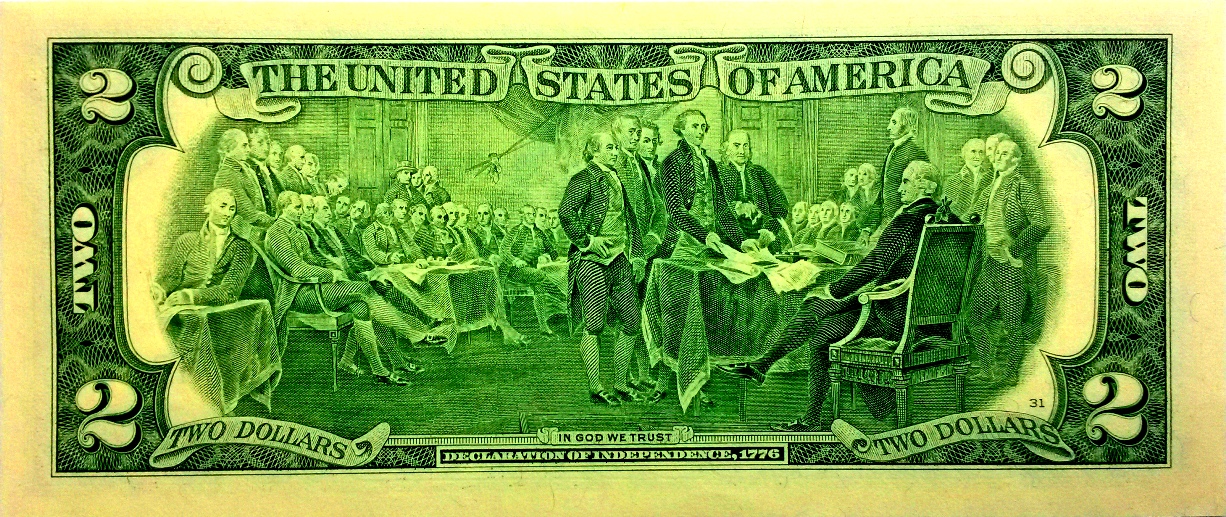
Two Dollars
 Two Dollars |
There was religion in countless varieties, sprouting and flourishing. Billy Graham, a Southern Baptist minister ordained in 1939, was gearing up for his successful effort to ‘revive revivalism,’ beginning with an eight-week tent meeting of 350,000 people in Los Angeles in 1949. Graham concentrated on conservatives within the larger Protestant denominations, and he proved remarkably successful and persistent being still a major figure in evangelical revivalism in the second half of the 1990s. His stress was on renewal, and peace of mind, epitomized in his Peace with God (1953). Successful evangelism was evidence of a much deeper and wider religious revival. The government gave its sanction to religious activity. In 1954 the phrase ‘under God,’ as used by Lincoln in his Gettysburg Address, was added to the national Pledge of Allegiance, sworn by all those gaining citizenship, and ‘In God We Trust’ was adopted as the country’s official motto. |